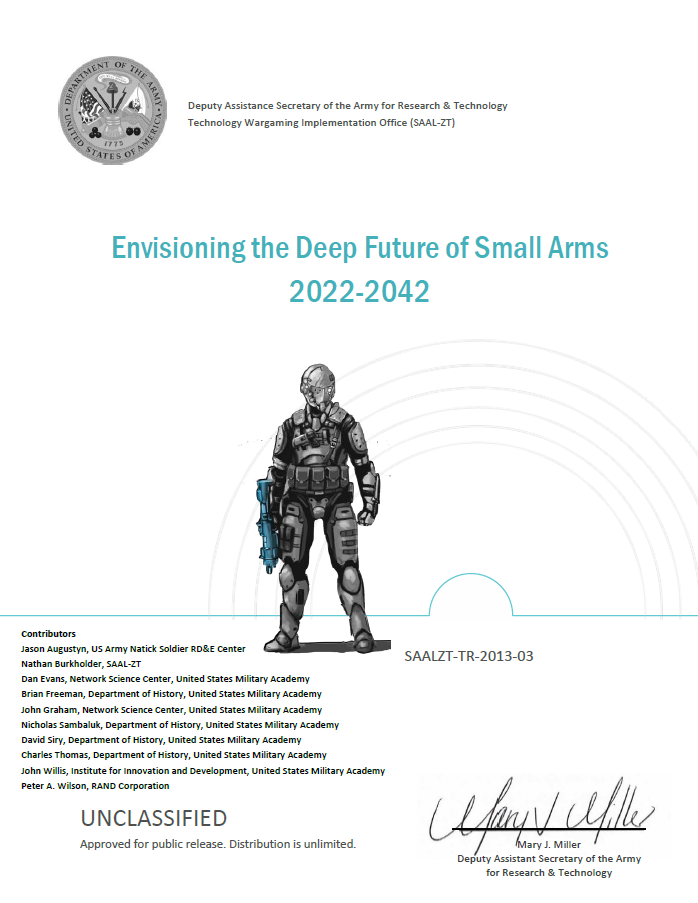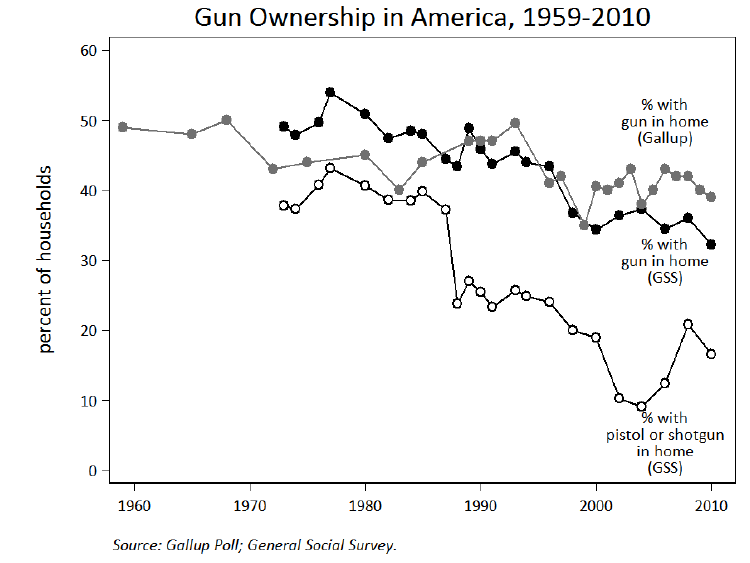In the summer of 2012, HQDA G3 provided a presentation to the Chief of Staff of the Army (CSA) focused on small arms overmatch at the squad level. This presentation resulted in questions raised by the CSA regarding the nature of the Army’s holistic strategy for small arms dominance into the future. HQDA G3 received the task to follow up on these questions and present back to the CSA a comprehensive small arms strategy. In support of the HQDA G3 mission, ASA(ALT) SAAL-ZT as the responsible agent for the Army’s science and technology investments, agreed to identify and prioritize future concepts with potential to enable long-term small arms overmatch for US military forces from the period 2020-2040+.
ASA(ALT) SAAL-ZT identified the following key questions to address through this activity:
- What technological and other trends, to include changes in the threat environment, will influence the evolution of small arms over the mid to far term given the need for emerging/new technology to remain under development longer in order to reach a higher Technology Readiness Level (TRL) before seeking transition to a program executive office (PEO)?
- Given these trends, what future small arms technology concepts are possible in 2020-2030 and 2030-2040 under various scenarios?
- How would the capabilities provided by these future small arms technology concepts support a variety of alternate future scenarios?
- What S&T investments are needed to realize these future small arms technology concepts?
ASA(ALT) SAAL-ZT reached out to the United States Military Academy’s (USMA) Network Science Center and to the Natick Soldier Research, Development and Engineering Center (NSRDEC) to lead the team that would address these questions. The study team took a comprehensive approach to looking into the future of small arms that encompassed several key thrusts:
- An analysis of the history of small arms technology within the US Army, from the Revolutionary War through recent operations in Iraq and Afghanistan.
- Interviews with experienced commanders at the platoon/company, battalion, and brigade/division level.
- Development of a set of alternate futures that describe potential scenarios for the strategic and tactical environment from 2022-2042.
- An ideation exercise that used the alternate futures and emerging insights from the other study thrusts to ground a free-thinking exploration of conceptual technologies for small arms in 2022-2042.
This process yielded numerous insights into the role of small arms technology in enabling squad overmatch in 2022-2042:
Lessons for the Future from the History of US Army Small Arms
- Technological overmatch is part of a complex system that requires simultaneous coordination on many fronts.
- Technological overmatch can be denied by Institutional Inertia.
- Technological overmatch is transient.
Insights into the Strategic and Tactical Environment of 2022-2042
- The definition of “technological overmatch” will change dramatically over the next 30 years
- It is impossible to discuss technological overmatch without considering rules of engagement
Insights into Future Technologies for Small Arms
- Future small arms technologies will blur established “lanes” within the S&T and PEO/PM community
- Emerging technologies promise to radically change the nature of how we define the relationship between Soldiers and small arms. In particular, robotic platforms and exoskeletons could provide disruptive capabilities for squads that address many limitations of current systems. However, these technologies will increase the “footprint” of the squad, with implications for the design of air assault and ground vehicles
- Few of the concepts provided overmatch across all alternate futures
Insights into the Nature of Innovation in Army S&T
- The Army has a rich tradition of small arms innovation, including many concepts that arrived “before their time”. These represent a significant, largely untapped resource.
- Innovation is an inherently human exercise dependent on “hot teams” given time and space to think big.
- Ideation must become a routine business practice for Army S&T.
…


